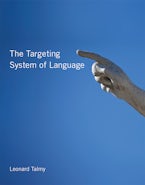The "great debate" in cognitive science today is about the nature of mental images. One side says images are basically pictures in the head. The other side says they are like the symbol structures in computers. If the picture-in-the-head theorists are right, then computers will never be able to think like people. This book contains the most intelligible and incisive articles in the debate, articles by cognitive psychologists, computer scientists and philosophers. The most exciting imagery phenomena are described, phenomena that indicate that mental images can be rotated and scanned, that smaller images are harder to see than larger ones, that when mental images are made larger they eventually overflow, that the "screen" they overflow from has a determinable shape (elliptical), and that this "screen" subtends a determinate visual angle, the angle of vision of the mind's eye. Such experiments cry out for explanation. If images are pictures in the head, who (or what) looks at them? Why haven't brain scientists found them? Such questions are the subject of the great debate. IMAGERY is an excellent choice for courses in cognitive psychology, perception: artificial intelligence, computer science; philosophy of mind, of psychology and of science; minds and machines, science and society.
Contributors
Roger Brown and Richard Herrnstein (on the work of Roger N. Shepard), Daniel Dennett, Jerry Fodor, Robert Schwartz, Stephen Kosslyn, Steven Pinker, George Smith, Steven Shwartz, and Zenon Pylyshyn












